How to Onboard & Train Field Service Workers: 6 Steps
- Published: April 30, 2024
- Updated: May 14, 2024

Field service professionals provide essential services to customers and clients outside of the traditional office and act as an in-person touchpoint between your business and the public.
However, this presents contextual training and onboarding challenges for companies, from supporting them in the field, training them on conflict resolution and interpersonal skills, service and product knowledge training, and providing IT tech support outside the office on mobile devices and tables.
In this article, we’ll discuss how organizations that employ field service workers can enable them with contextual onboarding and training that empowers them outside the office. We’ll also show you how Whatfix DAP enables your field service workers with guided tablet and mobile application experiences to help them navigate business processes and procedures, find the right support documentation, and maximize their efficiency.
What Is Field Service Training?
Field service training is a specific type of employee training focused on preparing field service technicians to effectively perform their jobs, which typically involve tasks outside of an office setting, such as installations, repairs, and maintenance. This training covers technical skills, customer service, and problem-solving to ensure technicians can handle on-site challenges independently.
Learning and development (L&D) encompasses all efforts to train a company’s workforce and align individual employee growth with that of the larger organization. Dedicated field service training is critical for businesses that rely on field service workers who provide customers with off-site services, maintenance, and support.
Effective field service training provides workers with technical and interpersonal learning content to equip them with all the skills, knowledge, and confidence they need to work independently, solve problems, and ultimately excel in their roles.
In today’s digital world, training is commonly delivered as personalized learning paths comprised of lessons, activities, and assessments through a mix of training delivery methods like in-person training, learning management systems (LMS), and digital adoption platforms (DAP). Training can also be offered in various formats, like virtual reality or on-the-job training depending on the needs of individual learners or larger organizations.
Components of Field Service Training
Field service workers wear many hats and spend much of their working hours on their own, so training programs must cover a wide range of topics and reach learners at a deep enough level to recall what they’ve learned when they arrive at a job site.
To provide your field service workers with comprehensive field service training, L&D teams need to target several essential training areas:
1. Comprehensive onboarding
Thorough onboarding is critical to developing a high-performing field service team. From the point of hire, begin integrating new field service employees into company operations by disseminating information and learning opportunities as soon as they become relevant. Throughout onboarding, which can last up to a year, managers and L&D teams should provide new team members with customized, digestible learning content to guide them through business operations, product details, and service offerings to set them up for success.
A robust onboarding process demonstrates a commitment to the success of new hires and kicks off a positive, engaging relationship between employees and employers to last the duration of an employee’s lifecycle.
You’ll need to onboard new field service workers to your compan’s core processes and procedures, your product or service, the tech and software they’ll be using, and more – all in a timely matter to help employees quickly get up to speed and are supported to achieve their responsibilities.
2. Technical skill development
Technical skills are the basis of field technicians’ roles, making this component vital to the success of new field service workers. Personnel should receive regular technical training to keep them up-to-speed in all aspects of your organization’s systems and technology and the tools and procedures they need to perform everyday tasks.
This includes setup, maintenance, repair, and troubleshooting. As new technology, products, and services are rolled out, field service techs should receive updated training to ensure they can provide the best possible service as they are dispatched into the field.
Field service technicians use mobile devices and tablets while out of the office, meaning they must be sophisticated users of both these technologies and the applications you’re running on them.
3. Soft skill enhancement
For customers and clients, field service personnel are the real-life embodiment of your brand. Proper soft skills, interpersonal communication, and conflict resolution training empower employees to convey confidence and professionalism through every interaction they have in the field. Emphasize the importance of customer service and conflict resolution training to ensure consistently positive customer experiences and promote strong, long-lasting customer relationships.
4. Product knowledge
Field service personnel should know the ins and outs of your brand’s products and services. This is not only important for equipment or utility-related services, but also for sales and healthcare. Include detailed and engaging product training in your L&D programming to give field service techs all the knowledge they need to resolve customer issues efficiently.
Instilling field service workers with extensive knowledge of your organization’s product and service offerings leads to more positive interactions between them and their customers, improving customer satisfaction, and brand loyalty by proxy.
5. Health and safety training
Health and safety is another essential component of training field service workers, who often work with potentially dangerous equipment and enter customer homes and places of business. By training field service personnel on critical health and safety protocols, they become able to recognize and mitigate risks and hazards as they arise. In the long run, proper health and safety training for field service workers ensures that they can perform their responsibilities while ensuring the safety and security of themselves and their customers.
6. Regulatory compliance
For companies that conduct field service work in industries like healthcare or utilities, regulatory compliance needs to be a constant consideration. Train field service workers to understand and adhere to relevant laws and regulations to keep everyone safe and guard the organization against liabilities, and penalties like OSHA violations. This often involves requirements for equipment maintenance as well as safety protocols and data security.
L&D teams can use learning software to deliver compliance training to field service workers and provide updated microlearning lessons when updates are rolled out. Field service management software can also be used for analysis of job and equipment safety metrics, and track compliance as work is being completed.
7. Continuous learning and development
With modern training solutions, content can be delivered in personalized mini-lessons to promote a culture of continuous learning and improve knowledge retention. Field service workers should regularly engage with training materials, whether watching a video describing process updates or learning new skills that can help them progress in their careers. This continuous learning approach goes a long way to demonstrate a commitment to employee success and career development while improving on-the-job performance.
8. Performance support and coaching
As field service workers take what they’ve learned into the field, managers should check in regularly to provide support and coaching as necessary. Support and coaching, not micromanagement, are key to helping team members reach peak performance and develop the skills they need to thrive.
With field service management software and digital adoption platforms (DAP), supervisors can use data analytics to pinpoint areas where team members need additional support or guidance, and determine the best way to provide it.
With Whatfix, create in-app guidance and support content that enables your field service workers with contextual assistance in the flow of work. This enables them with the right knowledge and support at critical moments of need to follow correct procedures, resolve conflicts, and provide better customer experiences. You can analyze your content usage and understand the friction areas in your applications and field service management business processes, providing you with data to create additional in-app content to support your field service technicians.
With a DAP like Whatfix, creating custom interactive, branded, in-app guidance, support, and tooltips is simple. You create tooltips in the no-code Whatfix Editor that allows you to click-and-drop tooltips in your application – and then use its advanced customization feature to brand the element to your product’s theme. With a DAP, create in-app walkthroughs, product tours, user onboarding checklists, beacons, smart tips, pop-ups, field validations, self-help wikis, and more!
9. Assessment and feedback
Incorporate regular assessments and feedback opportunities into training content to evaluate employee performance and gauge the effectiveness of training materials. These tools should be incorporated into training materials and framed as part of the learning process rather than fuel for judgment.
Managers and L&D teams can use data from assessment performance to adjust individual learning paths – many learning management systems will do this automatically. Feedback should be considered in earnest, and used to create more comprehensive training programs.
Benefits of Effective Training Programs
Effective training leads to more capable, engaged employees, which benefits every area of business and ensures that field service operations can keep running smoothly and improve over time. Here are some of the most common benefits organizations receive from effective field service training programs:
1. Improved service quality and customer satisfaction
As a result of proper training, field service workers are equipped with all the knowledge and skills they need to resolve issues quickly and provide stellar customer service. This leads to quicker issue resolution and eliminates the potential for customer frustration, keeping customers more satisfied and loyal to your brand.
2. Increased worker efficiency and productivity
In a similar vein, effective training provides field service workers with the knowledge and resources they need to perform efficiently. This improves response times and time-to-resolution and promotes a smoother overall work experience that benefits field service workers and customers alike.
3. Enhanced safety and compliance
Effective field service worker training is absolutely essential for guaranteeing adherence to safety and compliance laws and regulations. Safety and compliance training helps workers perform their responsibilities safely, avoiding accidents and injuries which can contribute to reduced morale and liabilities.
4. Greater employee engagement and reduced turnover
Engaging, personalized training keeps field service workers feeling supported at work, which can improve employee experience and keep field service workers feeling positive about their employers. L&D teams can use training to provide employees with regular opportunities for growth to help them move forward in their careers and make it more likely that they choose to stay and grow within the organization.
5. Faster onboarding and time-to-competence
Effective onboarding helps employees get acclimated quickly without skimping on essential learning content or quality of information. Achieving this balance can be tricky with traditional learning methods, but modern learning software can help optimize training materials and individual learning paths. By optimizing training to deliver personalized, useful information as needed, L&D teams can reduce stress for new hires and get them started on the right foot.
How to Onboard & Train Field Service Workers
Through new hire onboarding, managers and L&D teams acclimate new employees to their roles by disseminating the knowledge and skills they need to do their jobs and become functional members of your organization.
Because field service personnel have such wide-ranging responsibilities and often work off-site, developing onboarding and continued training programs can be daunting. Here are six critical steps your team can use to onboard and train highly effective field service personnel:
1. Create role-based, contextual training for different field service technicians
Even within one company, different field service personnel may work with varying types of equipment or differ in other aspects of their roles. Curate learning content based on employee roles to ensure they receive relevant information and don’t get bogged down by redundancies or content they don’t need.
With modern learning management software and digital adoption platforms, managers and L&D teams can create different versions of lessons that can be delivered to field service technicians based on their roles, experience levels, and learning styles.
2. Utilizing a blend of traditional and digital training tools
Training programs are more engaging and effective when they incorporate a variety of learning formats and activities. Take a blended learning approach to training that combines a variety of learning formats, like webinars, interactive videos, classroom learning, and on-the-job training. You can increase engagement and knowledge retention by providing different options and keeping learning experiences fresh.
3. Incorporating interactive and hands-on learning experiences
While learning styles vary, employees absorb more information from training programs when they can recall and demonstrate new knowledge throughout a course. Incorporate plenty of opportunities for learners to explain what they have learned through assessments and activities.
For field service techs who work in high-risk situations, it will likely be important to have them practice new skills in low-risk role-playing environments on the job or via virtual reality before they take what they’ve learned into the field.
With Whatfix, create replica application environments that allow you to train your employees in simulated experiences and role-playing scenarios. Your Whatfix in-app content overlays these applications and guides employees through different scenarios, helping them take the right action and follow the right process.
4. Leveraging mobile learning for on-the-go training
Many field service workers operate remotely and are constantly moving between job sites. To make training programs more convenient for employees, develop content that can be completed quickly and engaged with from different devices like mobile phones or tablets. This approach to training, allows field service personnel to absorb important information bit by bit over longer periods of time, which keeps information fresh and improves knowledge retention.
It’s also important to provide access to training materials and job resources via knowledge bases to ensure field service employees can access and interact with relevant training materials when issues arise on the job.
5. Implementing continuous learning and development programs
In the modern workplace, employee training has become a continuous growth process rather than a periodic obligation. L&D teams should develop training programs that encourage regular engagement with training materials and provide new content as regulations and technology evolve. While asking employees to participate in frequent training may sound difficult at first, L&D teams can emphasize the importance of training for individual growth and development while providing incentives that encourage employees to keep coming back.
6. Using performance support tools to aid in real-time problem-solving
Finally, tap into AI, data analytics, and other support tools to help steer employees through training and their everyday job responsibilities. Learning management and field service management software often provide robust insights that can be used to improve training programs and provide in-the-moment guidance as needed.
Challenges in Onboarding & Training Field Service Workers
Field service workers have unique positions, which require unique training solutions. Here are some of the challenges most commonly faced by L&D teams and managers looking to onboard and upskill their field service workers:
1. Geographic dispersion and scheduling conflicts
The nature of field service work requires field service personnel to be constantly moving between job locations. This often makes field service workers feel like it’s impossible to incorporate training activities into their schedules. Mobile, micro-learning content solves this problem by making training more convenient and accessible.
2. Diverse skill sets and experience levels within teams
When your field service team has a wide range of skill sets and experience, they are also likely to have a diverse set of training needs. Develop training programs and use learning software that allows for more content customization and makes it easy to build individualized learning paths. This way each employee receives the right training content that matches up not only with their role but with their needs as individual employees. This will help optimize time to proficiency and improve knowledge retention without overloading team members with irrelevant or redundant information.
3. Keeping up with technology advancements and challenges
Field service workers interact with constantly evolving technology and software, which can make designing training content challenging. Use a learning management system that allows L&D teams to easily update content and automatically provide updates to employees as they arise. With in-app messaging, L&D teams can alert employees to these updates within the software they use every day and prompt them to learn more about what’s changed without taking them away from their work.
4. Ensuring consistent quality of service across the workforce
The independence of field service work can make it challenging to ensure that all aspects of field service personnel’s work are performed effectively and consistently across your organization. Using digital learning management software can alleviate this problem by providing a uniform quality and depth of information to all field service workers, even if the format of learning paths is more customized. From there, L&D teams can use data gathered by field service management software to pinpoint skill gaps and areas for improvement and adjust individual learning plans as needed.
5. Legal and safety compliance issues
Regulatory compliance and safety protocols are essential to field service work, but regulations and rules may differ based on location, or in different circumstances depending on the size and industry of a given organization. Utilize software that monitors for regulation changes and technology advances, and use that data to create and update training materials that can be automatically disseminated to the employees who will be affected.
6. Maintaining engagement and motivation among workers
Field service work can be stressful for a variety of reasons, including the fact that service workers often do not feel connected to company culture in the same ways that in-office workers do. This makes constant communication and support, including training, vital to keeping field service employees feeling satisfied with their work and eager to grow with your organization.
7 Best Tools for Training Field Service Technicians
There are a variety of L&D and training software that you can leverage to empower your field service technicians. Here are seven of the best tools tailored to solve the contextual challenges of field service training:

1. Whatfix
- G2 rating: 4.6 out of 5 stars
- Price: Contact Whatfix for a quote
Whatfix is a digital adoption platform (DAP) that provides field service workers with in-app guidance and support on their tablet and mobile applications to help them adopt these platforms through guided in-app experiences. This interactive approach to eLearning uses in-app messages to provide intuitive, personalized support as employees navigate their work.
Whatfix lies on top of business applications to help users at every level of experience and technical proficiency optimize their use of the software they use for field service operations. The versatile nature of this tool allows field service workers to access support and training content 24/7, making learning convenient and saving time while boosting productivity.
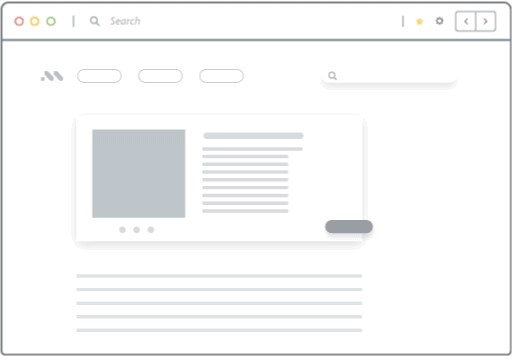
With Whatfix, you can:
- Use Tours, Task List, Flows to showcase field service applications to your technicians and workers.
- Provide simulated training with interactive replica software environments to create hands-on learning experiences for new employees
- Enable technicians in the field with Self Help, a resource center with how-to articles, conflict resolution, company procedures, SOPs, and more on your company’s business processes and services.
- Create field validations to ensure customer data is entered correctly and comprehensively.
- Make announcements on process changes, service updates, company news, etc. with in-app Pop-Ups.
- Collect feedback from your field service workers.
- Analyze how field service employees are engaging with your Whatfix in-app content.
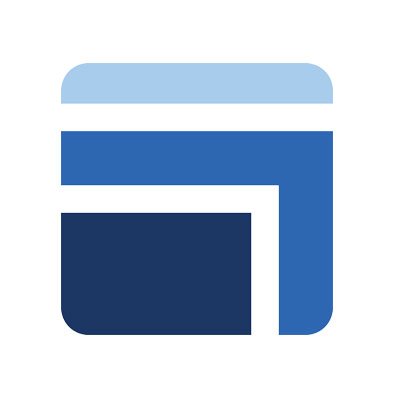
2. Skilljar
- G2 rating: 4.6 out of 5 stars
- Price: Contact Skilljar for a custom quote
Skilljar is a leading customer education platform built specifically to optimize customer and partner education, which can also be used for internal employee training. This solution includes a native data analytics suite that helps managers and L&D teams track learner progress and adapt learning content to meet the needs of field service workers as they go.
This solution is highly customizable and includes no-code, ready-to-use templates that allow L&D teams to design learning content to match your organization’s branding and includo. Skilljar uses data analytics to help L&D teams create customized learning paths based on audience and skillset and includes a built-in assessment and certifications engine which can auto-generate certificates and badges upon course completion.
This software integrates seamlessly with commonly-used customer enablement tools like Salesforce CRM, Marketo, Qualtrics, and GoTo, and includes robust data analytics teams can use to align training efforts with organizational goals.


3. Udemy Business
- G2 rating: 4.5 out of 5 stars
- Price: starts at $30 per month per user (billed annually)
Udemy Business is Udemy’s B2B learning solution, which helps L&D teams provide field service personnel with fresh, curated learning content they can access at any time. This solution includes self-paced, on-demand virtual training, as well as hands-on training for technical employees.
Udemy Business includes pre-built courses taught by subject matter experts in professional, technical, personal, and leadership skills. It also includes a custom course builder and learning path creation tools to help L&D teams create fully customized learning experiences for their employees. This solution also includes 24/7 support and user adoption and engagement reporting as part of its enterprise plan.
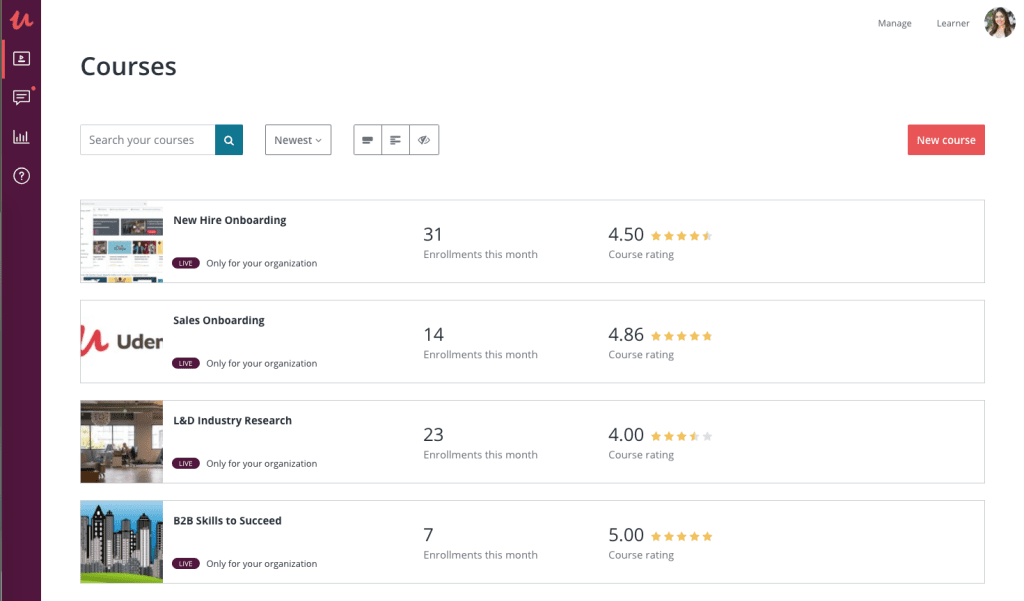

4. Augmentir
- G2 rating: 4.3 out of 5 stars
- Price: Contact Augmentir for pricing
This AI-fueled connected worker platform is an effective tool for managing field service productivity and training from onboarding through their entire employee lifecycle. Augmentir uses digitized workflows, augmented work instruction, industrial remote assistance, and AI-based insights to provide field service workers with personalized training and support.
This tool includes chat, video, and annotation tools to promote collaboration between workers and managers to resolve issues more quickly. These sessions can also be recorded and saved to be used as tutorials for other field service employees to access in the future. Augmentir also includes digital checklists and safety instructions to facilitate incident reporting and ensure that compliance needs are met as field service employees work and learn.


5. ServiceMax
- G2 rating: 4.0 out of 5 stars
- Price: Contact ServiceMax for a custom quote
ServiceMax is a field service management software focused on mobile field operations. This solution uses mobile apps and cloud-based software to help field service teams manage assets and streamline service operations from anywhere. With several solutions purpose-built for organizations in different industries, like ServiceMax Core for asset-centric industries, and ServiceMax FieldFX for energy service companies, this solution helps boost technician productivity, connect field and office teams, and provide critical metrics for optimal decision-making and issue resolution.
ServiceMax offers extensive training, including product certification programs and a content library with an array of self-paced on-demand courses to keep service workers adept in the field service management software they use every day.
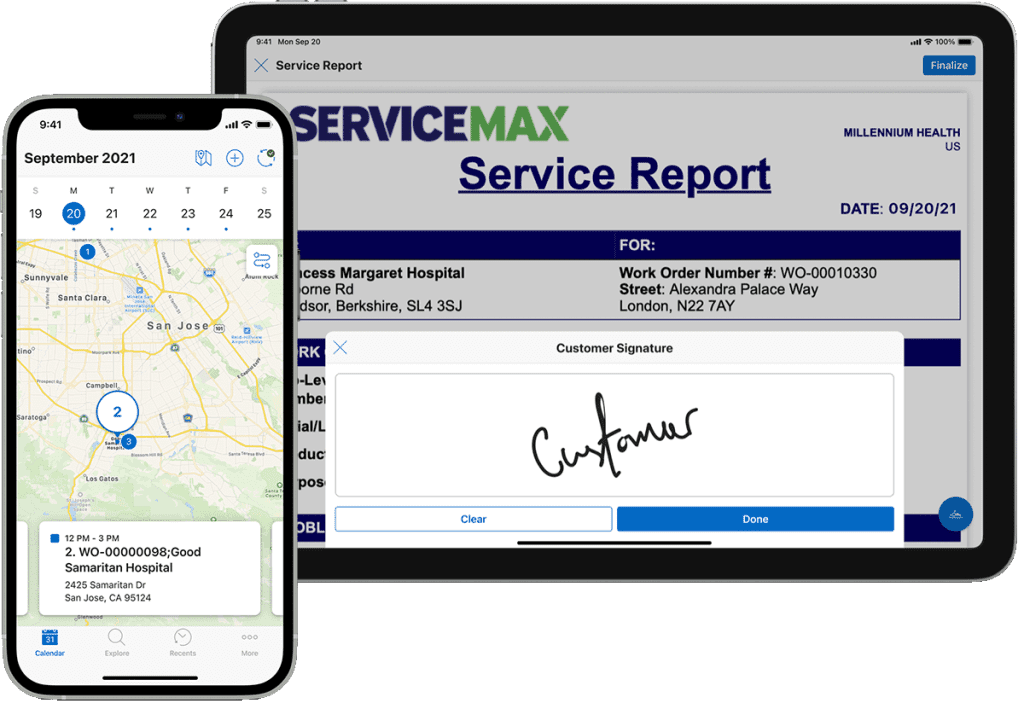

6. GoTo Training
- G2 rating: 4.3 out of 5 stars
- Price: Starts at $109 per month for 25 users
GoTo Training, part of the company formerly known as LogMeIn, is a widely used L&D platform that allows teams to create virtual and mixed-format training content for employees complete with assessments, document collaboration, and polls. It also includes on-demand analytics and reporting tools to help L&D teams continually optimize training programs.
With GoTo Training, learning content can be accessed by employees from any device, making it a great fit for training field service personnel. This software also includes custom registration forms, material management, and completion certificates to keep employees feeling engaged and appreciated as they work through their learning journeys.
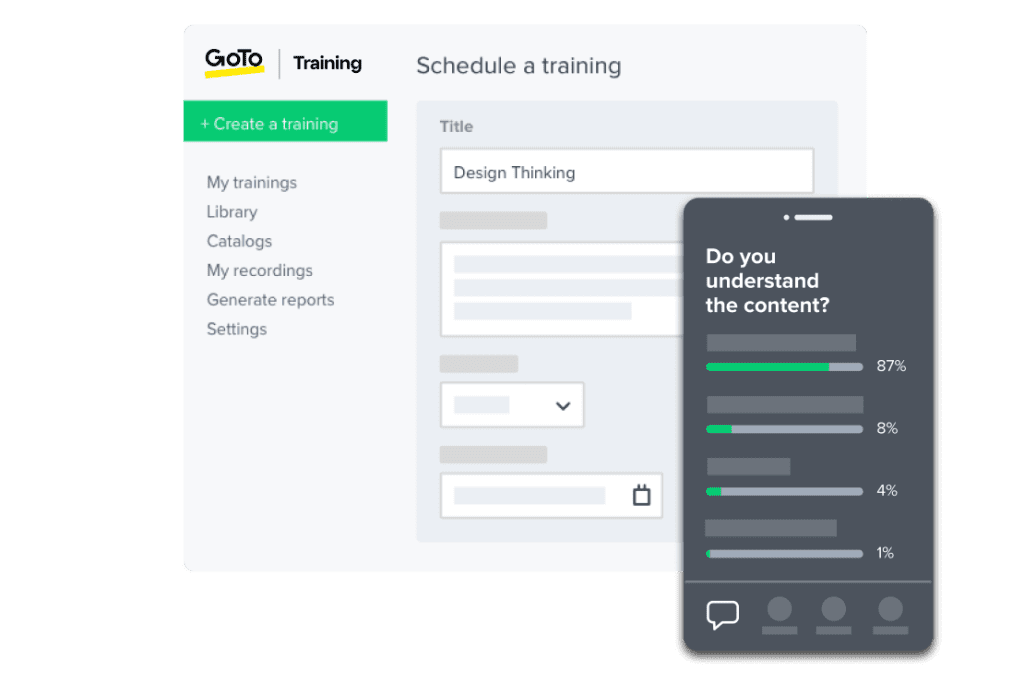

7. Adobe Captivate
- G2 rating: 3.9 out of 5 stars
- Price: Starts at $33.99 per user per month
Adobe Captivate is an eLearning course development solution that empowers L&D teams to create and deliver eLearning content tailor-made for different roles, including field service personnel. From virtual reality to responsive courses to software simulations, this software’s easy-to-use course authoring tools make it possible to design responsive courses to keep employees engaged as they learn.
Adobe Captivate allows L&D teams to convert existing PowerPoint presentations into interactive content or use pre-built templates for speedy course creation, all while prioritizing beautiful design. Its pre-built widgets, streamlined scenarios, and application simulations as well as collaboration and project-sharing tools make this software a powerful tool for creating courses that closely match the needs of field service employees. Once complete, courses can be exported as html for embedding, or xAPI packages that can be integrated into other learning management systems.
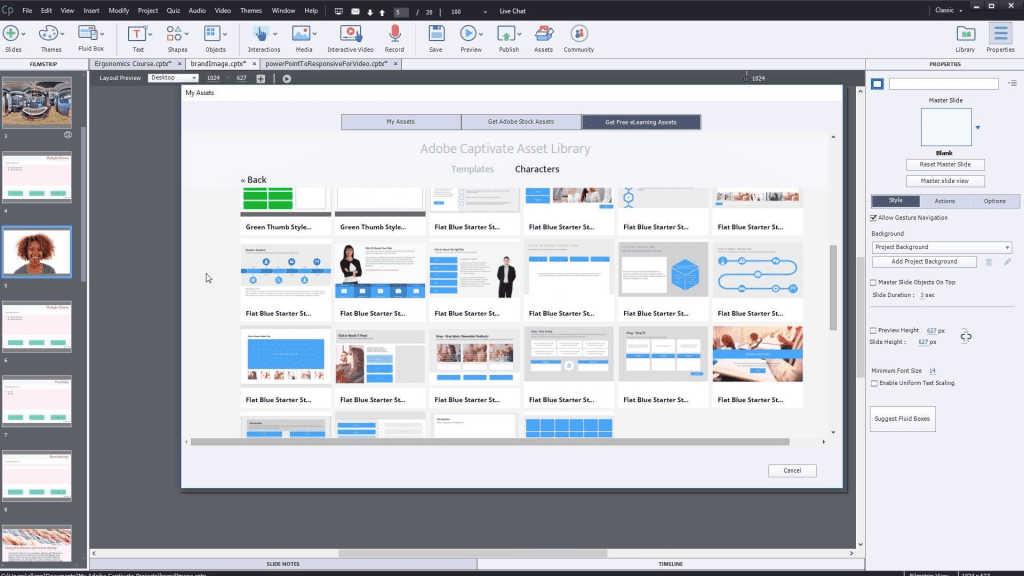
Keep field service workers connected and empowered to excel at work by providing convenient and effective in-app support and training with Whatfix. With this digital adoption platform, employees can train on the go and access the support they need around the clock.
With Whatfix, you can:
- Use Tours, Task List, Flows to showcase field service applications to your technicians and workers.
- Provide simulated training with interactive replica software environments to create hands-on learning experiences for new employees
- Enable technicians in the field with Self Help, a resource center with how-to articles, conflict resolution, company procedures, SOPs, and more on your company’s business processes and services.
- Create field validations to ensure customer data is entered correctly and comprehensively.
- Make announcements on process changes, service updates, company news, etc. with in-app Pop-Ups.
- Collect feedback from your field service workers.
- Analyze how field service employees are engaging with your Whatfix in-app content.
Ready to learn more? Request a demo!

Thank you for subscribing!




